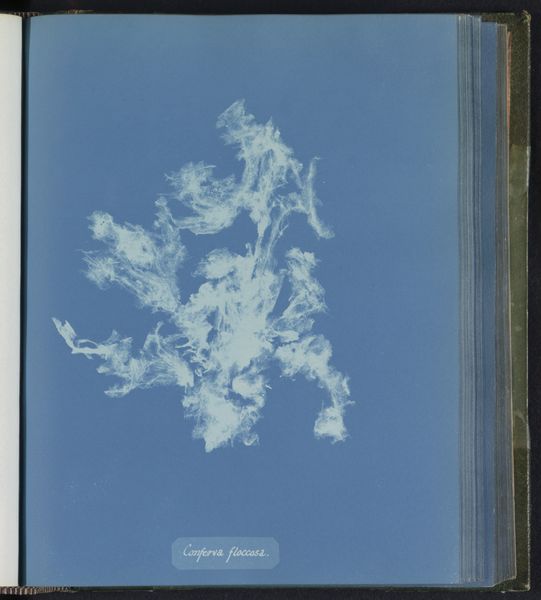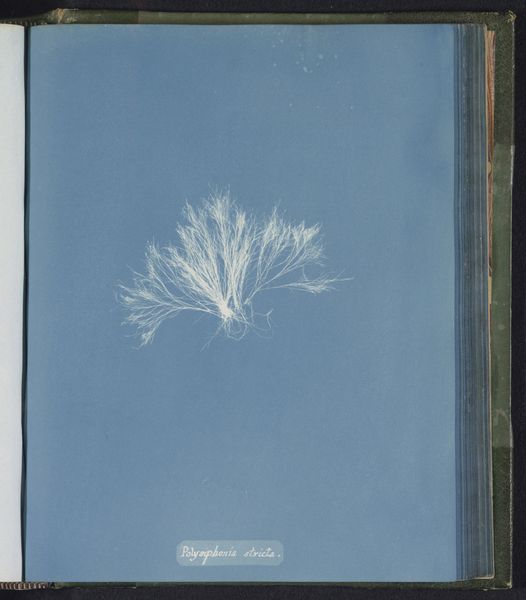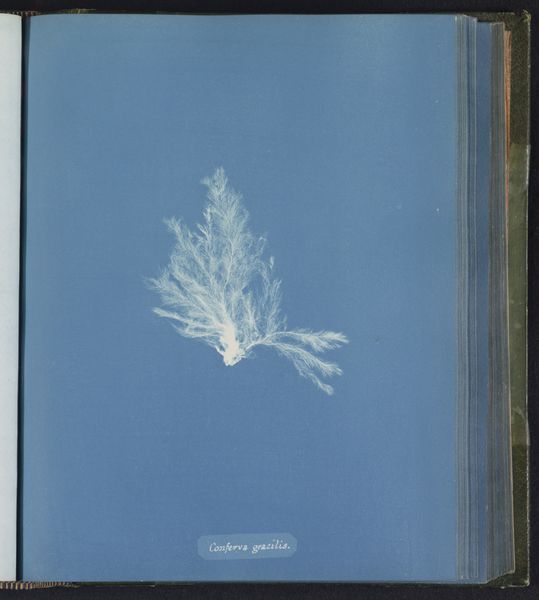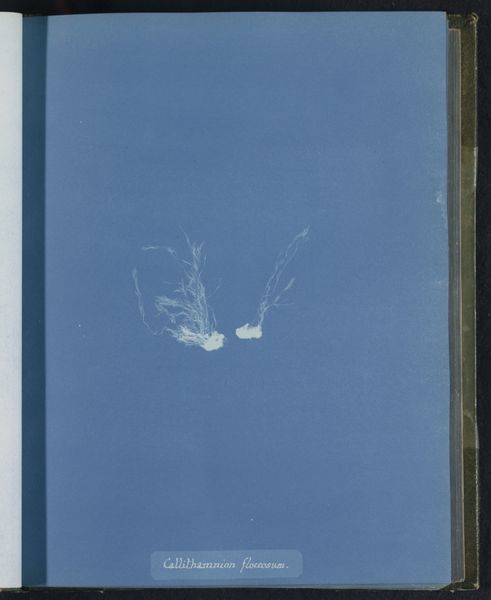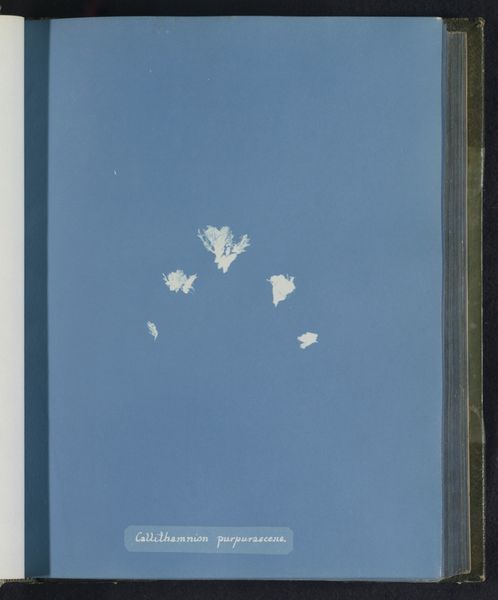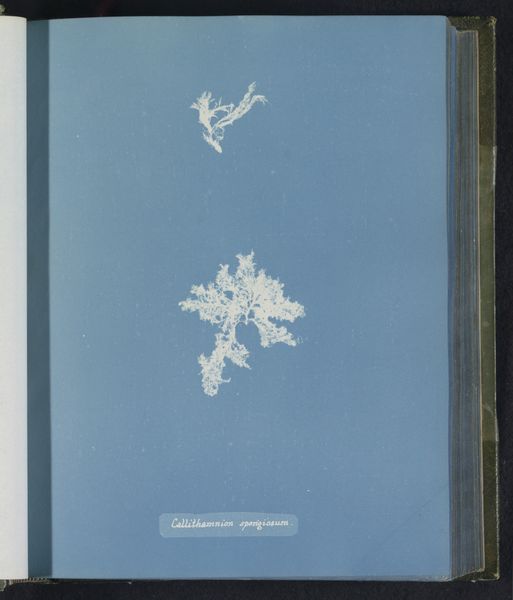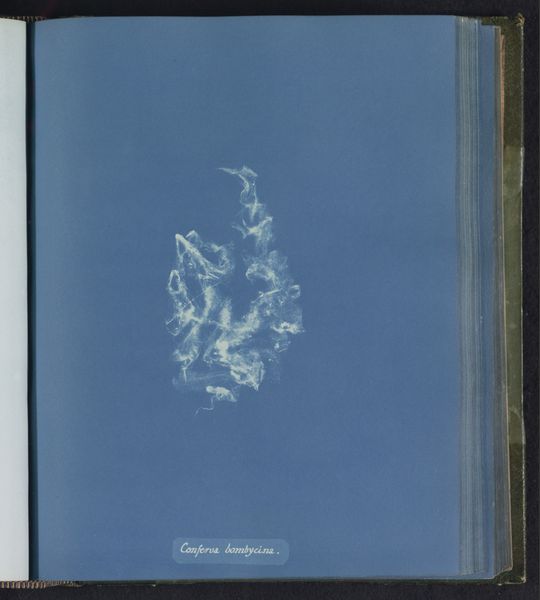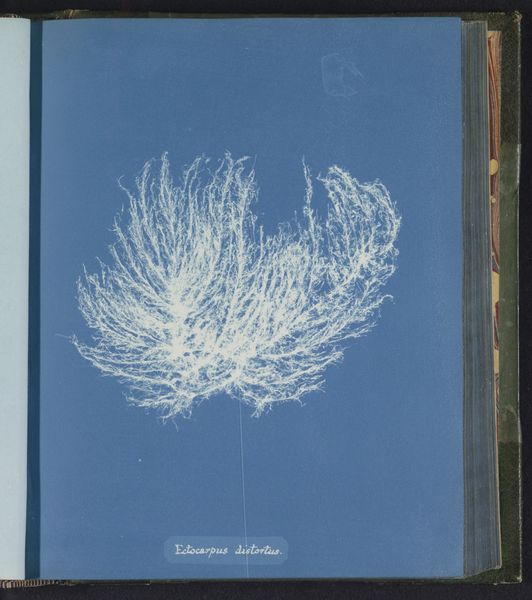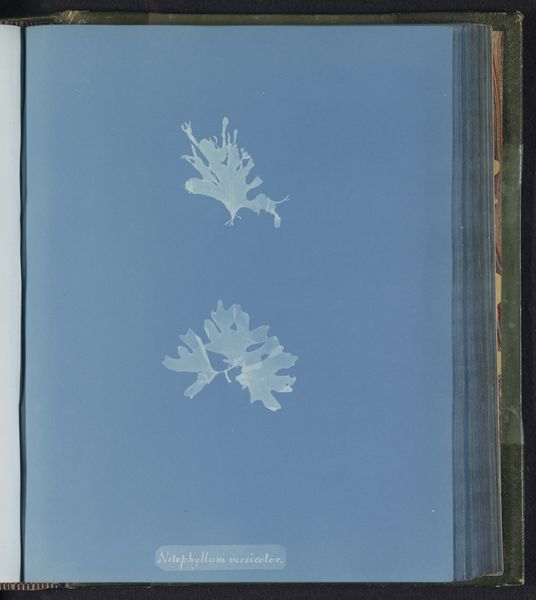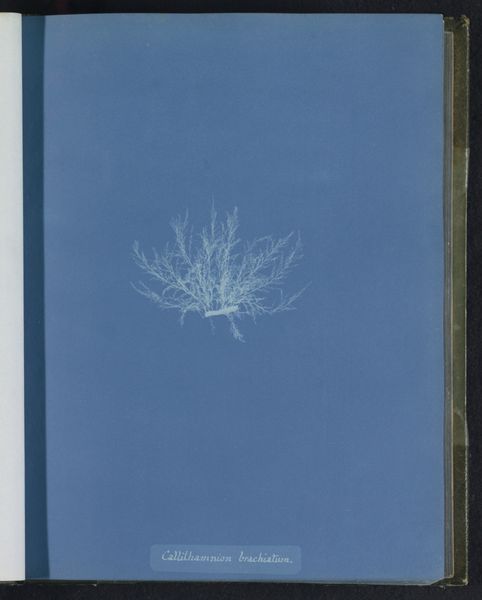
print, cyanotype, photography
# print
#
cyanotype
#
photography
#
naturalism
Dimensions: height 250 mm, width 200 mm
Copyright: Rijks Museum: Open Domain
Anna Atkins made this cyanotype of Conferva æruginosa, a type of algae, in the mid-19th century. It's a ghostly white image against a deep blue ground. Atkins didn't use traditional artistic materials like paint or clay. Instead, she harnessed chemistry and light. The cyanotype process involves coating paper with iron salts, placing an object — in this case, seaweed — on top, and exposing it to sunlight. Where the light hits, the paper turns blue; where the seaweed blocks the light, the paper remains white. It is a photogram made without a camera. Consider the act of collecting, identifying, and carefully placing the specimen. It speaks to a moment when scientific exploration was deeply entwined with personal engagement. Photography itself, a relatively new technology at the time, was being explored for its scientific applications, blurring the lines between art, science, and craft. Atkins’s work challenges the conventional hierarchy that places fine art above other forms of making. It reminds us that the value of an object lies not only in its aesthetic qualities but also in the knowledge, skill, and labor that go into its creation.
Comments
No comments
Be the first to comment and join the conversation on the ultimate creative platform.
